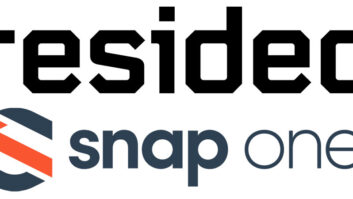by Brendan Morrissey
One of the disadvantages of traditional marketing is that it can be very difficult to quantify your results. Unless a customer walks into your business with a coupon or makes an online purchase using a special code, it’s challenging to fully track how many prospects your marketing campaign produced.
One good practice for every business is to ask your customers “How did you hear about us?” Interestingly, it is often a combination of several exposures from advertising, a news story, word-of-mouth, and other sources, that kept your business in their consciousness until they were ready to replace their stereo amp, upgrade to a better home theater system or finally install those outdoor speakers they’ve always wanted.
Online marketing can also provide an antidote to vague promotional efforts that are hard to track. No other form of advertising provides such a wealth of data, provided you know what to look for and how to best measure the activities. And in today’s world, online discovery is constantly used by consumers looking for local businesses – even if they’ve been given your name, heard of you on a radio ad or had previously driven by your business. So it’s important to pay close attention to the information available to you online.
As I mentioned in a previous blog post, almost everyone “knows a guy” who says he can do online marketing or “SEO”. Armed with basic knowledge of Google Analytics, he excitedly reports back to you about your number of hits, clicks, site visitors and time spent on your site. That is, until he gets distracted and forgets to send you updates, doesn’t closely monitor changes in keyword searches or simply employs a “set it and forget it” strategy.
At that point, getting him to help you really understand your online marketing is like trying to get the Wizard of Oz to step out from behind the curtain. There’s not a lot of transparency and you don’t get the full benefit of a rigorously managed set of online campaigns.
So, what exactly should you be measuring in an online campaign?
Two standard metrics are the number of ad impressions and the number of clicks. Ad impressions are the number of times your ad appeared to a prospective consumer, whether as a search engine ad (on Google, Bing, or Yahoo!) or as a display (banner) ad appearing on a content website. Clicks are the number of times a prospective consumer physically clicked on one of your ad impressions, driving him to a designated page on your website. Both are useful to understand the level of activity your ads have – how often ads are shown and how often consumers are actually interacting with them (an indicator that they find the ads highly relevant to what they are looking for).
Another important metric: “conversions.” That is, how many of the prospects that were driven to visit your site went further and took an action that you wanted them to take. A conversion may be different for everyone – as simple as navigating to the contact page, submitting a contact form, joining your email list, or downloading a free whitepaper. A well-managed online campaign will include conversion tracking to help you learn what is working best and how many contacts are likely to result from your online efforts.
Once you begin thinking about conversions, then you must work on conversion path optimization. This is a fancy way of saying: “help interested prospects find the most relevant information on your site quickly to boost the probability of a contact”. Several things can influence the conversion path and many are quite simple to do.
Many online ad campaigns simply drive a prospect to a home page rather than a specific landing page that is closely related to the online ad which the prospect clicked on. Specific landing pages are a great opportunity to strengthen your company’s brand and reward the prospect for clicking on an ad. For example if a prospect clicked an ad for an audio-video dealer co-branded with a manufacturer like McIntosh Labs, your best bet would be to drive them to a landing page rich with McIntosh-related content.
In summary, it’s a combination of factors that can positively impact your online ad campaign. It’s not just setting up a campaign, but engaging technology to continually monitor and refine the campaign (rather than the time-consuming task of trying to do it manually). It’s working with an expert who has experience in your industry. It’s working with a company that provides detailed reporting on relevant metrics. It’s providing a real call to action and then leveraging that to maximize conversions.
The goal of your campaign isn’t just to produce ad impressions but to increase sales. Increased revenue is the ultimate metric.
Brendan Morrissey is CEO of Netsertive.







